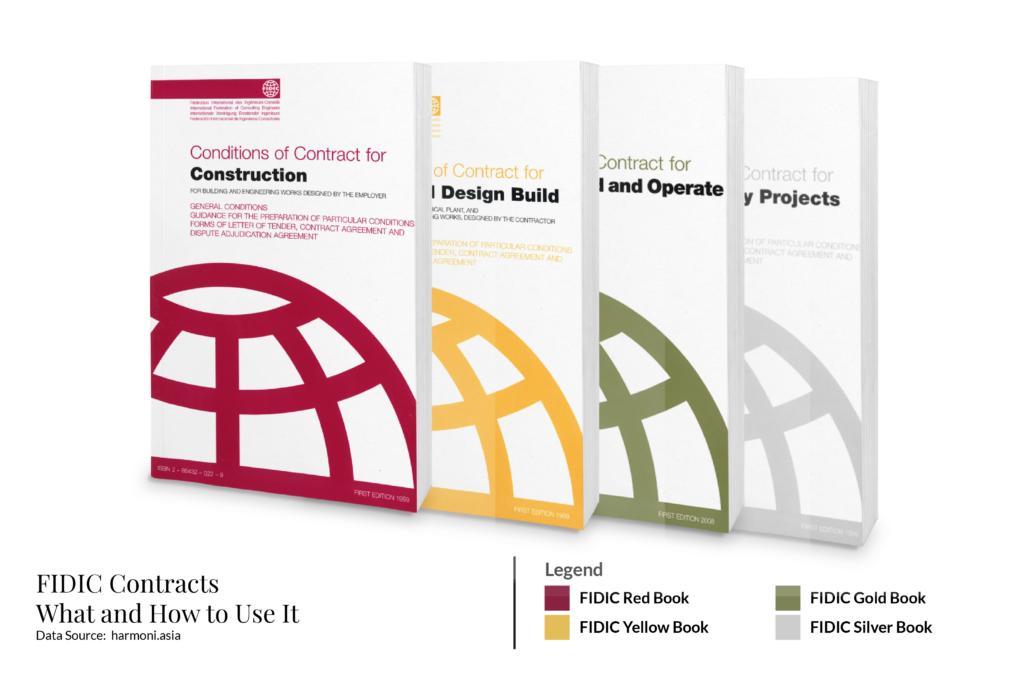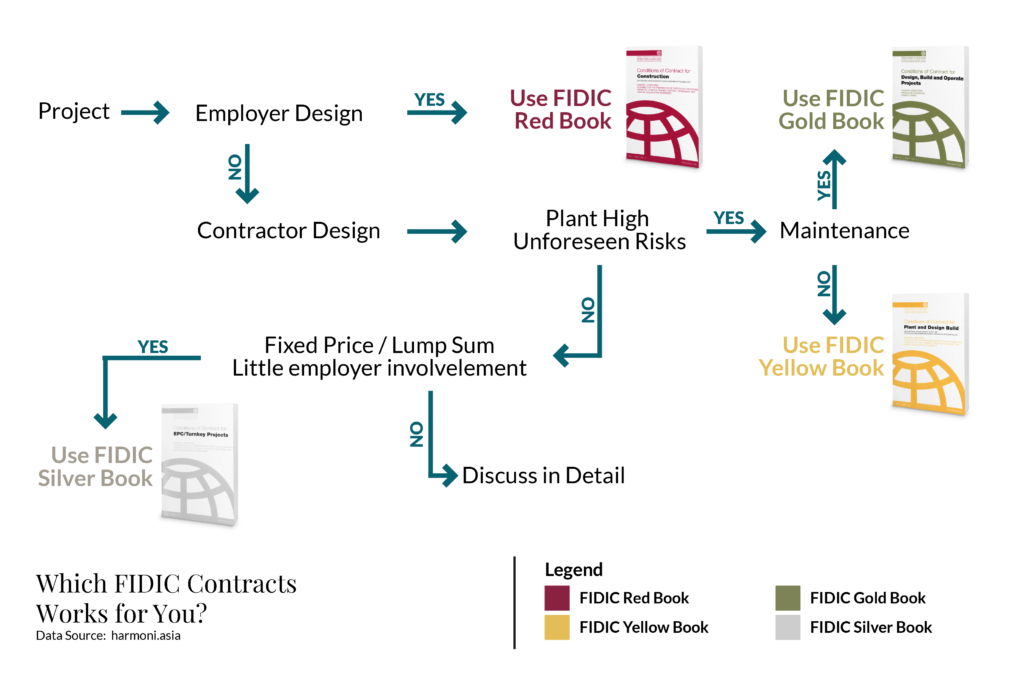
FIDIC Contracts: A Guide for Engineers and Project Owners

FIDIC Contracts: A Guide for Engineers and Project Owners
If you’re involved in the construction and engineering industry, you’ve likely come across FIDIC contracts. The International Federation of Consulting Engineers (FIDIC) is renowned for its standardized contract forms that provide a robust framework for construction projects worldwide.
In this post, we’ll explore the significance of FIDIC guidelines in construction contracts which is structured as follows:
Table of Contents
ToggleI. What is FIDIC Contracts
FIDIC, is a global organization that sets the standard for construction and engineering contracts. Their guidelines and contract forms are recognized and respected across the industry. It is known for their fairness, balance, and thoroughness.
II. Why You Have to Use FIDIC Contracts
- Internationally Recognized
Their contracts are widely accepted and understood globally, making them an ideal choice for international projects with multiple stakeholders.
- Clear Allocation of Responsibilities
Their contracts clearly define the roles and responsibilities of all parties involved, reducing the potential for disputes and misunderstandings.
- Comprehensive Framework
These contracts cover various aspects of a construction project, including payment terms, dispute resolution, variations, and quality control, providing a holistic approach to project management.
- Flexibility
While FIDIC contracts offer a standardized framework, they can be adapted and customized to suit the unique requirements of each project.
III. Type of Contracts
FIDIC differentiate the type of contracts based on the nature of the job and scope of work. In general ,it can be divided as follows:

This contract form is commonly used in the construction industry for projects where the employer (project owner) provides the detailed design and specifications, and the contractor is responsible for executing the construction work according to those design and specifications.
This contract form is commonly used in the construction industry for projects where the contractor is not only responsible for constructing the project but also for designing it. Moreover, it places a significant design responsibility on the contractor and covers various aspects of the project.
This contract form is commonly used in the construction industry for projects where the contractor assumes significant responsibilities for the entire project, from design and construction to long-term operation maintenance. However, the contractor is not usually responsible for financing the project or guaranteeing its commercial success.
This contract form is commonly used in the construction industry for projects where the contractor takes on a significant level of responsibility, including not only the construction but also the design (Engineering) and the procurement of materials and equipment (Procurement). The contractor delivers a fully functional project to the employer (project owner) on a turnkey basis.
IV. Which FIDIC Works for You
When it comes to selecting the most suitable contract for a construction or engineering project, it is crucial to consider various factors. These factors include the nature of the work to be performed, the specific responsibilities of the parties involved, and the overall scope of the project. Making the right choice at this stage can significantly impact the project’s success and mitigate potential disputes down the line.
To aid in the selection process, Figure 3 below presents a flow chart that outlines a structured approach for choosing the appropriate FIDIC contract.

V. Conclusion
FIDIC guidelines in construction contracts are a valuable resource for ensuring the smooth execution of projects, both locally and internationally. By providing a fair and balanced framework, they promote transparency, accountability, and effective project management.
Whether you’re an employer, contractor, or consultant, understanding FIDIC contracts and guidelines can help you navigate complex construction projects with confidence and clarity.
About Author
Tom, Ir. S.T., M.Sc., IPP.


